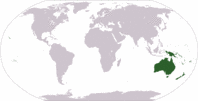Hydriastele valida
| Hydriastele (high-dree-Ah-STEL-eh) valida (VAHL-EE-dah) | |||||||
|---|---|---|---|---|---|---|---|
 Hawaii. Photo by Geoff Stein. | |||||||
| Scientific Classification | |||||||
| |||||||
| Synonyms | |||||||
|
| |||||||
| Native Continent | |||||||
|
| |||||||
| Morphology | |||||||
| |||||||
| Culture | |||||||
|
| |||||||
| Survivability index | |||||||
|
| |||||||
| Common names | |||||||
|
| |||||||
Contents
Habitat and Distribution
Endemic to New Guinea. Elevations around 1,000 m in the Torricelli Mountains of north central New Guinea.Description
Solitary palm, with stems 15 20 cm in diameter; leaves about 22 per crown, strongly arcuate, with pinnae ascending and rigid, not drooping at the tips, sheath ll0 cm long, petiole 40 cm long, blade 210 cm long, petiole and rachis brown lepidote above and below, pinnae about 57 on each side, to 80 cm long, 2.2 cm wide, glabrous above, brown-dotted below, lacking ramenta. Inflorescence branching to 2 orders, with 6-7 secondary axes, these white, glabrous; upper peduncular bract present, 20 cm long, narrow, triangular; rachillae 48 cm long with about 134 triads. Staminate flowers white, 17 mm long and 4.5-6.5 mm wide, stamens 12, pistillode lacking; pistiliate flowers white, 3 mm high. staminodes 3, dentiform; fruit 1l X 7 mm, dark red to purple; endosperm homogeneous. (Frederick B. Esseg 1973)
H. valida appears to be most closely related to H. longispatha, but there are clear differences in the foliage and fruit. The leaf rachis is not as strongly arcuate as in H. longispatha and the pinnae are stiff and erect, not drooping at the tips as in that species. The epithet valida refers to the strength and robustness of the foliage. The fruit lack the series of fibrous bundles in the outer pericarp characteristic of H. Longispatha, but otherwise the pericarp structure is very similar. The fruit also ripen to a dark red color, as opposed to the bright red of the neighboring species. In addition, H. valida has staminate flowers with 12 stamens while the nearest populations (all those in the Sepik Basin) of H. longispatha have staminate flowers with 9 stamens. H. valida appears to be most similar to H. longispatha, bur lacks the outer series of fibrous bundles' and has a broader zone of non-tanniniferous parenchyma between the fibrovascular bundles and the tanniniferous zone. (Frederick B. Esseg 1973)
Hydriastele valida appears to be most closely related to Hydriastele longispatha, but lacks the outer series of fibrous bundles and has a broader zone of non-tanniniferous parenchyma between the fibro vascular bundles and the tanniniferous zone, but there are clear differences in the foliage and fruit. The leaf rachis is not as strongly arcuate as in Hydriastele longispatha and the pinnae are stiff and erect, not drooping at the tips as in that species. The epithet valida refers to the strength and robustness of the foliage. The fruit lack the series of fibrous bundles in the outer pericarp characteristic of Hydriastele Longispatha, but otherwise the pericarp structure is very similar. The fruit also ripen to a dark red color, as opposed to the bright red of the neighboring species. In addition, Hydriastele valida has staminate flowers with 12 stamens while the nearest populations (all those in the Sepik Basin) of Hydriastele longispatha have staminate flowers with 9 stamens. The new species might be confused with Hydriastele mayrii that occurs in the Torricelli Mtns. at somewhat higher elevations (Darbyshire 464 at CANB, LAE), and which apparently has a similar overall appearance. The generic distinction (of longer,valvate petals in the pistillate flowers) is clear, however. (Frederick B. Esseg 1973) Editing by edric
Culture
Comments and Curiosities
- IMAGE GALLERY
External Links
- Glossary of Palm Terms
- MODERN BOTANICAL LATIN
- "Just To Be Clear"
- https://www.palms.org/principes/1982/v26n4p159-173.pdf
References
Phonetic spelling of Latin names by edric.
Special thanks to Geoff Stein, (Palmbob) for his hundreds of photos.
Special thanks to Palmweb.org, Dr. John Dransfield, Dr. Bill Baker & team, for their volumes of information and photos.
Glossary of Palm Terms; Based on the glossary in Dransfield, J., N.W. Uhl, C.B. Asmussen-Lange, W.J. Baker, M.M. Harley & C.E. Lewis. 2008. Genera Palmarum - Evolution and Classification of the Palms. Royal Botanic Gardens, Kew. All images copyright of the artists and photographers (see images for credits).
Frederick B. Essig, University of South Florida, Tampa Florida.
Many Special Thanks to Ed Vaile for his long hours of tireless editing and numerous contributions.











